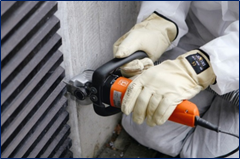 Ensuring the longevity of a co-ownership building requires ongoing vigilance, especially when it comes to the maintenance and repair of common areas. These responsibilities, which fall to the board of directors, are crucial for the building's longevity. Among these, caulking holds a preeminent place. This delicate operation is vital for effectively countering recurrent water infiltration problems, thus ensuring the building's waterproofing and preserving its structural integrity. Therefore, rigorous maintenance is indispensable.
Ensuring the longevity of a co-ownership building requires ongoing vigilance, especially when it comes to the maintenance and repair of common areas. These responsibilities, which fall to the board of directors, are crucial for the building's longevity. Among these, caulking holds a preeminent place. This delicate operation is vital for effectively countering recurrent water infiltration problems, thus ensuring the building's waterproofing and preserving its structural integrity. Therefore, rigorous maintenance is indispensable.
Choice and application of sealant: Keys to Success
The success of a caulking project is not just about choosing the sealant, which needs to be both flexible and perfectly adherent to the surfaces involved. Its composition, ideally concentrated, plays an important role in the effectiveness of the product. However, the quality of the caulking is just one aspect of success. The application method, including the cleanliness of the surface and checking for compatibility with previously used products, is just as crucial to prevent the risk of detachment and ensure lasting adhesion. It is important to note that the width of the sealant joint must be at least 9.5 mm (3/8 inch) and not exceed 25.4 mm (1 inch). For joints wider than 25.4 mm (1 inch), adding a backer rod as a joint filler is necessary before applying the sealant.
The market offers a range of sealant products with varying performances. Some, easy to apply and appealing to amateurs, have a limited lifespan of two to five years. In contrast, high-quality sealants require a more technical application, including the use of a tool to smooth the product and ensure a flawless finish. This application requirement, though potentially more laborious, is essential for optimal adherence and durability.
Therefore, choosing a high-quality sealant is important not just for immediate aesthetics and waterproofing but also for the longevity of the work done. In the context of co-ownership management, opting for proven materials and application techniques is a strategy that contributes to the preservation of the building and the optimization of long-term maintenance costs.
Role of the Board of Directors
For board members, it is necessary to recognize the importance of professional caulking application. It is important to demand that contractors remove the old sealant before applying a new one. The conditions for storing and using sealants, as well as adhering to their expiration date, are equally important to ensure the long-term effectiveness of the caulking.
Impact on energy efficiency and sustainability
While sealants do not directly increase a building's energy efficiency, their role in protecting against water infiltration is vital, thus indirectly contributing to thermal comfort and the structure's durability. Consequently, the board must ensure that caulking work is performed to the highest standards, selecting quality materials and demanding that contractors adhere to the best application practices.
Conclusion: The expertise of contractors and planning
Success in maintaining caulking relies on choosing specialized contractors with the necessary technical expertise and an understanding of co-ownership-specificities. Integrating this work into the co-ownership's maintenance log is strategic for proactive management, avoiding emergencies and preserving the building's optimal condition. This approach ensures the co-ownership's longevity and protects the investment of its members.
For any additional information, please do not hesitate to contact us.
Georges Fallah, Architect
Member of the Quebec Order of Architects (MOAQ)
President of G.A.P.Immeubles inc
Tél. : (514) 946 8807
Fax : (450) 478-4932
Courriel : [email protected]
The columns express the personal opinion of their authors and do not in any way commit the responsibility of the site's publisher, CondoLegal.com Inc. The content and opinions expressed in a column are solely those of the author.
